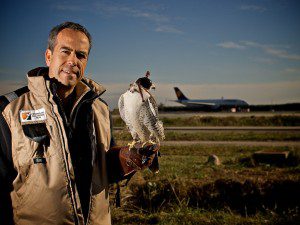Wildlife Photography at Barcelona Airport: The Fascinating World of Falconry in Aviation

Discovering an Unexpected Photography Assignment
While browsing through a magazine, I came across an uninspiring photograph of a falconer at Barcelona’s El Prat Airport. Despite the lackluster image, I immediately recognized the potential for a compelling visual story. This juxtaposition of nature and aviation presented a unique photography opportunity that could showcase both wildlife photography and documentary storytelling.
I contacted my writer colleague, ‘Doc,’ and we began developing the concept. The pitch to the magazine was straightforward, leaving us with only the airport bureaucracy to navigate. While the administrative process moved at the expected slow pace, it proved less challenging than anticipated—a fortunate circumstance in aviation photography where security concerns often create significant access barriers.
Behind-the-Scenes at Airport Wildlife Management
The reality we discovered defied our expectations completely. Rather than the simple “one man and his bird” operation we had envisioned, we encountered an extensive wildlife management program featuring a dedicated team and approximately 80 different birds housed in a specialized compound situated directly between the airport runways.
This sophisticated operation represents a fascinating intersection of wildlife management and aviation safety, with trained raptors serving as a natural deterrent to birds that might otherwise cause dangerous aircraft strikes. The scale and professionalism of the program offered numerous compelling photography opportunities.
Technical Challenges in Aviation Photography
The image featured here captures a moment of apparent humor—the falcon seemingly observing an incoming aircraft. This composition creates a visual narrative that connects the two worlds. The lighting technique employed involved off-camera flash, creating a somewhat theatrical, studio-like quality that belies the challenging environmental conditions: windy weather and chilly temperatures.
This controlled lighting approach demonstrates how professional photography equipment can transform challenging outdoor conditions into opportunities for distinctive imagery. The contrast between the controlled light on the falcon and the natural background creates visual impact while maintaining documentary authenticity.
Future Photography Project Potential
The assignment proved to be one of those rare photography experiences that could easily evolve into a more extensive project. Our limited time only allowed us to scratch the surface of this fascinating operation. A deeper visual exploration would reveal a more comprehensive story about this unique intersection of wildlife conservation and aviation technology—a subject worthy of extended photographic documentation.
